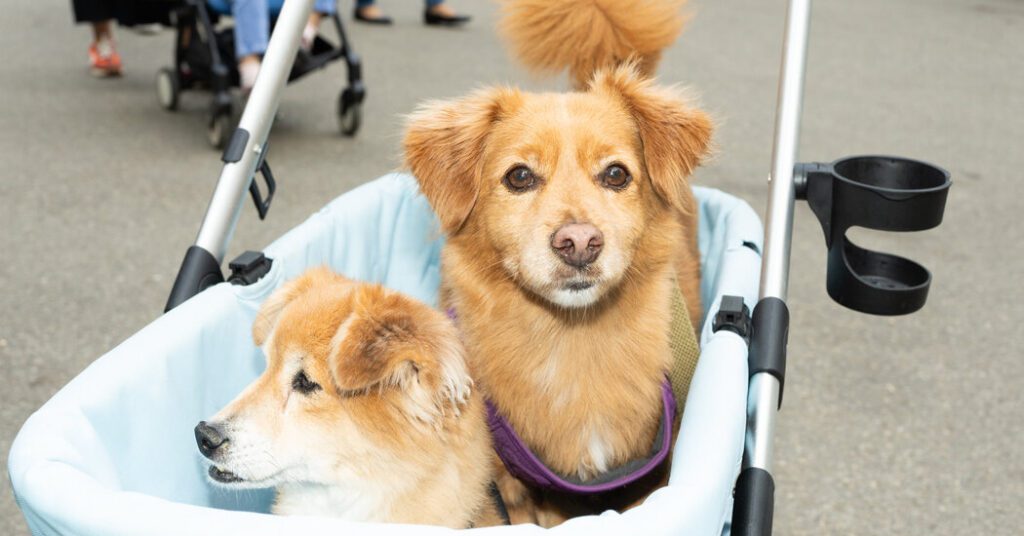Pets are more popular than ever. According to the American Pet Products Association, roughly two-thirds of American households own at least one pet, up from 56% in 1988. And the amount of money Americans spend on pets is growing from $123.6 billion in 2021 to $136.8 billion in 2022. An estimated 91 million European households own at least one pet, an increase of 20 million over the past decade. India's pet population has grown from 10 million households in 2011 to 31 million in 2021.
And pets are becoming more and more like people. At least, that seems to be our goal. We pamper them with customized nutrition plans and backpack carriers, doggy hydrotherapy and stays at boutique cat hotels. At All the Best, a chain of upscale pet stores in Seattle, the most popular items are enrichment toys for cats and dogs, designed to stimulate and bring happiness to animals who are increasingly “lying around alone and bored,” says Annie McCall, the chain's marketing director.
Now, some animal welfare ethicists and veterinary scientists question whether our efforts to humanize pets have gone too far: They argue that the more we treat pets like humans, the more restricted and dependent their lives become, and the more likely they are to develop health and behavior problems.
“We now view our pets not just as family members, but as children,” says James Serpell, professor emeritus of ethics and animal welfare at the University of Pennsylvania School of Veterinary Medicine. “The problem is that dogs and cats are not children, yet owners are becoming increasingly protective and restrictive, so the animals are not free to express their natural canine or feline nature.”
Of course, the health risks start with breeding. One of the most popular dog breeds in the United States is the French bulldog, a brachycephalic, flat-faced dog that is highly affectionate with people but suffers from serious health problems, including difficulty breathing.
But we're also changing animals' relationships with their environments. Due to concerns about predation by birds, many cats now spend their entire lives indoors. Until the late 1970s, even urban dogs spent most of their time outdoors, roaming free in backyards or neighborhoods. “Free-roaming dogs are seen as going against the natural order of things,” says Jessica Pierce, a Colorado bioethicist who now studies animal-human relationships.
One of the fastest-growing market segments is the so-called pet confinement sector, which includes crates, indoor fences, head harnesses and electronic collars. “The level of restraint that dogs are subjected to is severe,” Dr. Pierce said. While dogs a few decades ago were more likely to be hit by a car, “the experience and freedom of movement outweigh those risks,” she added.
The modern pet paradox can be summed up as follows: Owners don't want their dogs to act like dogs, says Dr. Serpell.
Dogs are increasingly being allowed into human spaces, including restaurants, offices, stores, hotels and even parks with dog runs, but their increased presence does not mean they are more independent.
Confinement and isolation, in turn, lead to increased separation anxiety and aggression in animals, Dr. Serpell said. Currently, roughly 60% of cats and dogs are overweight or obese. And the burdens and costs of modern pet ownership (veterinary fees, pet sitters, boarding) are also contributing to more people abandoning animals at animal shelters, leading to higher euthanasia rates. According to animal welfare group Shelter Animals Count, more than 359,000 dogs were euthanized in shelters in 2023, the highest number in the past five years.
“We're in a weird period of obsession with pets,” Dr. Pierce says. “We have too many pets, and we're over-intensively raising them, and that's not good for us or for them.”
Indeed, domesticating an animal has always meant balancing the animal's nature with ours. “Defining freedom for dogs, an animal that has been artificially domesticated and selected by humans for so long, is a really interesting puzzle,” says Alexandra Horowitz, a dog cognition researcher at Barnard College.
Dr. Horowitz drew a contrast with free-ranging dogs, which constitute most of the world's estimated 900 million dogs. Free-ranging dogs, he noted, have a shorter lifespan and no guaranteed food, but they can make all of their own choices. “That's an interesting model for us to think about how we can make dogs' lives more enriched with choices, so that they're not always at the whims of humans and putting society as a whole at risk,” Dr. Horowitz said.
In recent years, Scandinavian countries have begun to ban the keeping of dog breeds that are particularly susceptible to the disease, such as Cavalier King Charles Spaniels. In Sweden, it is illegal to leave pets at home for long periods of time. In both Sweden and Finland, it is illegal in most cases to cage animals inside the home.
But it's unclear whether such animal welfare policies will reconcile or reinforce a fundamental contradiction in modern pet ownership, says Harold Herzog, a professor emeritus of psychology at Western Carolina University who studies animal-human relationships. “The more we view dogs and cats as independent creatures, the less justifiable it becomes to keep them as pets,” he says.
A few years ago, Dr. Hertzog was vacationing in Tobago and spent much of his time observing the stray dogs that roamed the area. “I asked myself, 'Do I want a dog that lives a pampered life in Manhattan, or a dog that plays with friends in Tobago?'” he said. He concluded, “I want to be a dog in Tobago.”
This isn't a realistic option for most people, and it's not necessarily a good thing for the Tobago of the world. Instead, Dr. Serpell has this advice for modern pet owners: “By all means enjoy your dog's company, but they are not people. Instead of trying to make them conform to your ideas, understand the animal from its own perspective. This will allow you to indirectly experience the life of another creature.”

